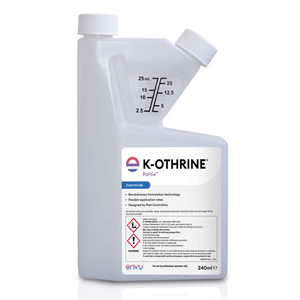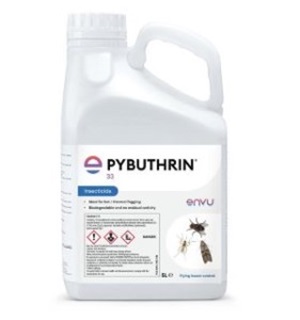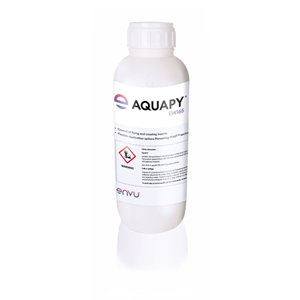Characteristics:
- Single pair of membranous wings
- Hindwings modified as halteres
- Suctorial mouthparts, piercing or non-piercing
- Large compound eyes
- Tarsi, 5-segmented
- Metamorphosis complete with egg, larval, pupal and adult stages
Species characteristics:
Common Housefly (Musca domestica)
- Adults, 6-8mm long with 13-15mm wingspan
- Grey thorax with 4 longitudinal dark stripes
- Basal half of abdomen buff-coloured and occasionally transparent at sides, with central dark band broadening to cover last abdominal segments; at rest, wings are spread
- Venation shows a sharp upward bend of 4th vein at apical end.
Lesser Housefly (Fannia canicularis)
- Adults, 6mm long with 12mm wingspan
- Grey thorax with 3 longitudinal stripes, less pronounced than those of Common housefly
- Extensive yellow patch at base of abdomen
- At rest, wings are folded along back
- Venation shows 4th vein extending straight to wing margin
Areas where found:
Common Houseflies (M. domestica) are ubiquitous insects, with a flight range of at least 8 kilometres (5 miles). They are highly active indoors. In colder climates breeding generally ceases before winter, whereupon the insects overwinter either as pupae or adults. However, in warm environments houseflies remain active and
reproduce throughout the year. Lesser Houseflies (F. canicularis) are frequently encountered in poultry houses. They have an erratic flight pattern and are often seen flying in large numbers around indoor light fittings. The Lesser housefly is more tolerant of cool conditions than the Common housefly. This species survives the winter
mainly in the form of pupae, although, as with the Common housefly, adults remain active and reproduce throughout the year in warm conditions.
Houseflies can transmit intestinal worms, or their eggs, and are potential vectors of diseases such as dysentery, gastroenteritis, typhoid, cholera and tuberculosis. They will frequent and feed indiscriminately on any liquefiable solid food, which may equally be moist, putrefying material or food stored for human consumption.
Flies liquefy food by regurgitating digestive juices and their stomach contents on to the food substance. This ‘liquid’ is then drawn up by the suctorial mouthparts and in so doing the insects pick up pathogenic organisms, which may collect on their bodies to be transferred on contact with other surfaces or survive passage through the gut to be deposited as fly spots. Fly spotting, produced when the insect feeds or defecates, results in rejection of contaminated farm produce, for example eggs, at point of sale. Furthermore, flies are frequently the subject of complaints to environmental health authorities, causing major problems where infestations over-spill from breeding sites such as rubbish tips and animal houses. The Lesser housefly makes longer flights and spends less time resting than the Common housefly. Females of the species tend to remain near the breeding sites and only the males migrate. For these reasons F. canicularis is less prone to transmit disease than M. domestica, but large populations and similar feeding habits mean that this insect, too, has a considerable potential to act as a vector of disease. It has occasionally
been implicated in intestinal or urinary myiasis.
Lifecycle:
Common Housefly
Forty-eight hours after emergence as an adult, the female commences egg laying. During her adult life of 1-3 months she is capable of producing 4-5 batches of 100-150 eggs. The pearly-white cylindrical eggs, 1mm in length, are laid in moist decaying matter such as household refuse, compost or dung. The eggs hatch in 8-48
hours, giving the smooth, white, legless maggot larvae. These burrow away from light, seeking an optimal temperature of 21-32°C, and after 3 moults reach maturity at a length of 10-12mm. In the summer larval development may be completed within a few days, but in winter this process may take more than a month. When
mature, the larvae leave the breeding site for the cooler surrounding areas; e.g. soil. Here they develop as yellow, brown or black pupae 6mm long. Depending upon conditions, adults emerge 3 days to 4 weeks later. The full cycle is generally completed between one and 4 weeks, depending upon temperature. It is clear that there is considerable potential for the development of huge populations. Under temperate conditions as many as 12 generations of flies may breed in one season whilst under tropical conditions even this rate of reproduction will be exceeded.
Lesser Housefly
Lesser houseflies are prolific breeders in poultry manure, but will also breed in other moist decaying matter. Egg laying commences when the female is 10 days old. The eggs are bananashaped, 1mm in length and bear a pair of longitudinal ridges which assist flotation in a liquid medium. The flattened, legless, grey-brown
maggots hatch within 24-48 hours. Hairy protuberances on their dorsal surface are thought to aid progression and floating in a semi-liquid medium. The newly hatched larvae frequently wander for a time before burrowing into a suitable food. Larval development requires a minimum period of 8 days, during which time the larva passes through 3 stages, eventually attaining a length of 6mm. Pupation requires a drier location and lasts for at least 10 days. Development from egg to adult emergence takes 3 weeks, although cooler conditions prolong this period.
Control:
Flies have rapid, prolific breeding habits and high mobility. In order to break the life-cycle, control measures should be directed against larval and adult flies.
a) Hygiene/management
Satisfactory hygiene is necessary to limit potential breeding sites and food sources. Domestic refuse: this must be stored in well sealed bins, for early removal to disposal sites. High-risk material should be sealed in bags and burnt wherever possible. Refuse tips should be covered with earth, to a depth of at least 230mm
(9 inches), and then compacted. This will minimise adult emergence and promote fermentation temperatures at which larvae cannot survive. Farm manure: manure should be kept as dry as possible, especially in poultry houses, where leaking water feeders can provide ideal, moist breeding conditions. The Biothermic method of
storing dung involves compacting manure into a cuboid stack, a method particularly suited to horse manure. This form of storage promotes uniform, persistent fermentation throughout the dung, which is lethal to larvae. Tarpaulins can also be used to cover heaps, in order to prevent egg laying and conserve the heat of fermentation. Entry of adult flies into buildings can be prevented by 1.18mm-mesh fly-screens (which can easily be removed for cleaning), air curtains, bead screens or self-closing doors equipped with rubber flaps.
b) Physical control using maggot traps
Maggot traps take advantage of the fact that larvae need to migrate from breeding sites to cooler surroundings in order to pupate. A simple trap consists of a concrete platform, on which manure or refuse is stored, surrounded by a water-filled moat in which migrating larvae are trapped.
c) Insecticides
In order to obtain the best results, insecticidal control measures (see recommended products) should be integrated with good hygiene.
_______________________________________________________________________________________________________________________
Glossary of terms:
Halteres: Club-shaped balancing organs.
Suctorial: Capable of sucking.
Tarsus (Tarsi): Apical section of leg (the foot).



